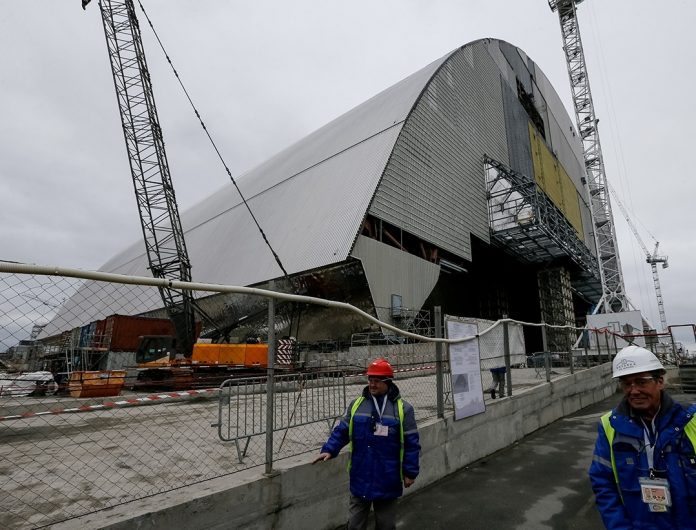
KIEV, Ukraine – An international effort to seal the destroyed remains of the nuclear reactor that exploded in Ukraine 30 years ago is finally close to completion, and remarkably, considering the political revolution and armed conflict that have rocked the country since 2014, it’s close to being on schedule.
The completion of the New Safe Confinement, often called the “arch,” could contain the radiation from mankind’s worst nuclear catastrophe for a century, says the European Bank for Reconstruction and Development, which has led the project. But it will also mark a handover to Ukraine’s fractious and underfunded authorities, who are expected to tackle future waste management at their own expense.
For three decades, she has been living with the consequences of Chernobyl explosion. She can recall that morning in late April 1986, and the small signs that something was wrong in the workers’ town where she lived: the tinny, metallic taste in her mouth. The way her 6-month-old daughter slept so deeply after breast-feeding.
But there were no sirens then in Pripyat, no hint of the magnitude of the nuclear catastrophe playing out just miles away. Soviet authorities did not immediately report the botched experiment at a reactor in Chernobyl’s nuclear power plant, which released a radioactive cloud over Eastern Europe larger than that of the 2011 disaster in Fukushima, Japan. Ukraine is still coping with the effects today.
“By the time we were evacuated, we had been exposed for 36 hours,” Makyrevych said in an interview in Kiev last week, her speech interrupted by a hacking cough. “My entire family has been affected by this. We are all sick. My daughter, my son, my husband and me.”
Makyrevych, who requires regular medical treatment, complained of a monthly handout of just $60 from the Ukrainian government – and that hasn’t always been on time.
And now the authorities in Kiev will have to shoulder the whole burden.
The international project will seal both the wrecked reactor No. 4 and the temporary protective “sarcophagus” installed in 1986 inside the New Safe Confinement. Resembling a massive hangar, the 360-foot-tall building’s two sides will wheel into place next year and, once sealed, robotic cranes inside will disassemble the destroyed reactor and manage the disposal of a lava-like mass filled with uranium.
Ukraine in the past two years has been rocked by a pro-European political revolution, the annexation of Crimea by Russia and a grinding war in eastern Ukraine that has left more than 9,100 people dead. Inflation and austerity measures have made life harder for average Ukrainians, and the parliament has been paralyzed by infighting.
But located far from the front lines and backed by 1.5 billion euros in funding, much of it from the EBRD, European Commission and United States, the project has largely been insulated from the political chaos taking place in Kiev, 60 miles to the south.

